- Home
- Franz Kafka
Letters to Milena
Letters to Milena Read online
CONTENTS
Cover
About the Book
About the Author
Also by Franz Kafka
Title Page
Introduction
A Note on the Text
Letters to Milena
Notes
Copyright
ABOUT THE BOOK
Franz Kafka’s letters to his one-time muse, Milena Jesenska – an intimate window into the desires and hopes of the twentieth-century’s most prophetic and important writer
Kafka first made the acquaintance of Milena Jesenska in 1920 when she was translating his early short prose into Czech, and their relationship quickly developed into a deep attachment. Such was his feeling for her that Kafka showed her his diaries and, in doing so, laid bare his heart and his conscience. While at times Milena’s ‘genius for living’ gave Kafka new life, it ultimately exhausted him, and their relationship was to last little over two years. In 1924 Kafka died in a sanatorium near Vienna, and Milena died in 1944 at the hands of the Nazis, leaving these letters as a moving record of their relationship.
ABOUT THE AUTHOR
Franz Kafka (1883–1924) was born into a Jewish family in Prague. In 1906 he received a doctorate in jurisprudence, and for many years he worked a tedious job as a civil service lawyer investigating claims at the State Worker’s Accident Insurance Institute. He never married, and published only a few slim volumes of stories during his lifetime. Meditation, a collection of sketches, appeared in 1912; The Stoker: A Fragment in 1913; Metamorphosis in 1915; The Judgement in 1916; In the Penal Colony in 1919; and A Country Doctor in 1920. The great novels were not published until after his death from tuberculosis: America, The Trial and The Castle.
ALSO BY FRANZ KAFKA
Fiction
Metamorphosis and Other Stories
The Complete Short Stories
Amerika
The Trial
The Castle
The Complete Novels
Non-fiction
The Diaries of Franz Kafka
Letters to Felice
INTRODUCTION
‘THE EASY POSSIBILITY of writing letters,’ wrote Franz Kafka to Milena Jesenská, ‘… must have brought wrack and ruin to the souls of the world. Writing letters is actually an intercourse with ghosts and by no means just with the ghost of the addressee but also with one’s own ghost, which secretly evolves inside the letter one is writing or even in a whole series of letters, where one letter corroborates another and can refer to it as witness.’ Kafka’s own ghost, or ghosts, still haunt his Letters to Milena. Nowhere else does he reveal himself more completely, for to no one did he bare his soul so utterly as to Milena Jesenská. ‘One can tell you the truth like no one else,’ he wrote to her, ‘and one can tell you the truth both for one’s own sake and for yours; in fact, one can even discover one’s own truth directly through you.’
Franz and Milena’s relationship reflected the contradictions of Kafka’s Prague—Jew/Gentile, German/Czech—although between them these differences accounted for more concord than conflict, perhaps because both enjoyed ‘foreignness for its own sake.’ As the letters prove, however, their bond ran much deeper than mere affinity—so deep, in fact, that Kafka gave Milena all his diaries but the one he was still writing. And in that last notebook he wrote: ‘Always M. or not M.—but a principle, a light in the darkness!’
Milena Jesenská’s profession amplifies her uniqueness: among the women in Kafka’s life she was the only writer. And although her letters were destroyed, we can still hear her voice, or at least its echoes, in passages quoted by Kafka, in letters she wrote to Max Brod, and in her own articles and essays.
Letters to Milena was first edited by Willy Haas, a friend of both author and addressee. Milena had entrusted them to Haas when the Germans occupied Prague, and he published them in 1952. ‘I have every reason to assume,’ he wrote, ‘that Milena would have had no objection to their publication after her death.’ Many years later, however, Milena Jesenská’s daughter, Jana Černá, disputed Haas’s statement, claiming that neither her mother nor Kafka ‘would have ever allowed the letters to be published.’ But by then the letters had already entered the Kafka canon. Moreover, in an article entitled ‘Letters of Notable People,’ Milena herself expressed the idea that as long as our understanding of art is so imperfect that we require more than just the artist’s statement, ‘as long as we must place our fingers in the wounds, like Thomas, we have the right to convince ourselves the wounds exist, and that they are deep.’
Haas, on the other hand, feared that the letters might expose wounds other than Kafka’s, and he chose to cut many passages he felt would injure certain people still alive at the time of publication—including himself. He did not indicate the omissions, so that a fragmentary quality resulted, which was reinforced by the desultory arrangement of the letters; they had not been dated, and the editor was ‘far from trying to insist’ that his proposed order had ‘succeeded beyond doubt in every detail.’
A new German edition, published in 1986 by Michael Müller and Jürgen Born, reinserted the missing fragments, creating a substantially larger text. Only four omissions were maintained, and their publication would be unlawful as well as indiscreet. Because much of the new matter is mundane, the expanded letters seem more ‘human.’ Moreover, the restorations significantly facilitate reading, as does the new chronology devised by the editors, who had far better means at their disposal. The addition of an extensive critical apparatus further enhances the reader’s understanding.
This is essentially an English version of the Born-Müller edition. The new material it contained called for a new translation, one which would show a more informal, more personal Kafka.
Milena Jesenská was born in Prague on August 10, 1896. Her father, Jan Jesenský, was a prominent and prosperous oral surgeon, a professor at Prague’s Charles University. He was proud, an outspoken Czech nationalist, and anti-Semitic. At home he was short-tempered, egoistic, paternalistic—often tyrannical. Less is known about her mother, Milena Hejzlarová, who died of anemia when Milena was thirteen. Milena never forgot the contrast between her soft-spoken mother and her domineering father, a contrast exacerbated by the professor’s habits of womanizing and gambling. Although Milena undoubtedly admired her father, her love for him was mixed with hatred, and their relationship remained ambivalent.
She received a broad education at the well-known and very progressive Minerva School for Girls, where she met her friends Staša and Jarmila, so often mentioned in the letters. Later she enrolled in medical school but soon dropped out, as she did from the music conservatory which followed. She devoted more time to her friends, often instigating escapades considered scandalous. She experimented with drugs stolen from her father’s practice. She became involved with men. She spent her father’s money lavishly on clothes, presents, flowers. She was emancipated, rebellious, extravagant, decadent, daring, and very much in love with beauty.
In his preface to the first edition of these letters, Willy Haas described Milena in her youth:
She herself sometimes struck one as like a noblewoman of the sixteenth or seventeenth century, a character such as Stendhal lifted out of the old Italian chronicles and transplanted into his own novels, the Duchesse de Sanseverina or Mathilde de la Mole: passionate, intrepid, cool and intelligent in their decisions, but reckless in her choice of means when her passion was involved—and during her youth it seems to have been involved almost all the time. As a friend she was inexhaustible, inexhaustible in kindness, inexhaustible in resources whose origin often remained enigmatic, but also inexhaustible in the claims she made on her friends—claims which, to her as well as to her friends, seemed only natural.
If her w
ild antics reflected her unsupervised state—her father busied himself with his own affairs—it was not mere escape. Very much in the spirit of the times, she was consciously developing her own very spiritual aesthetic. She read widely and followed trends in art avidly. She despised the bourgeois provincialism that enfettered Czech ‘society’ in Prague, and cultivated friends from both the German and German-Jewish literati. Among the latter she found her first great love, Ernst Pollak. Although not a writer himself, ‘Pollak the Expert’ exerted substantial influence on Franz Werfel and other writers who gathered in the Café Arco. It was he who introduced Milena to Franz Kafka.
The liaison with Pollak so outraged Jan Jesenský that he had his daughter committed to a sanatorium in Veleslavín for several months. During her stay, however, Milena came of legal age: she was released and the lovers were married and immediately moved to Vienna. For Pollak, this meant little more than leaving the Arco for the Café Central (and later the Herrenhof); social integration was more difficult for his wife, however, whose German was not impeccable. Moreover, while both partners adhered to the theory of free love espoused by Otto Gross (whom Kafka also held in high esteem), Milena restricted its practice more than did her husband, whose many romances caused her to suffer. ‘I am the one who pays,’ she wrote. According to Haas, ‘She fitted poorly into and suffered under the erotic and intellectual promiscuity of the Viennese literary café society during the wild years after 1918.’
She was also beset with financial worries. Severe shortages, rationing, and extraordinary inflation made life in Vienna generally difficult. To earn money she taught Czech, and later even worked as a porter at the train station. She began writing for periodicals based in Prague; her first ‘Letter from Vienna’ appeared in the Tribuna on December 30, 1919. She also tried translation, and in 1920, at the age of twenty-three, she published a Czech version of ‘The Stoker’ by Franz Kafka. This work led to their exchange of letters, almost all of which were written between April and November, 1920. During this time they met only twice; later she visited him when he was very sick, and in the end she relied on Max Brod to keep her informed.
By that time Milena had broken with Ernst Pollak, and in 1925 she returned to Prague and became partially reconciled with her father. There she continued writing fashion articles and feuilletons, and entered the circle known as Devětsil, a group of artists that included the prominent architect Jaromír Krejcar. He became Milena’s second husband, and in 1928 paní Milena gave birth to a daughter, Jana. During pregnancy, however, she developed a partial paralysis in her left leg from which she never fully recovered, despite drastic cures and long stays in sanatoria. Morphine treatments led to addiction, which ruined her ability to write; she lost her job, and her marriage disintegrated.
Membership in the Communist Party helped her to return to a more active life; she also resumed her writing, now for the party press. She formed another close attachment with her comrade Evžen Klinger—both eventually broke with the party, after the first show trial and the execution of Zinoviev and Kamenev in 1936. She joined the staff of the liberal-democratic journal Přitomnost (Presence), where in articles such as ‘There Will Be No Anschluss,’ she addressed the growing menace from Nazi Germany. She worked on refugee relief committees, and when Prague was occupied, she helped many Jews, including Klinger, escape to Poland. After the Nazis shut down Přitomnost, she continued writing for the underground press until her arrest in November 1939. She was sent to a camp for people who had consorted with Jews and ultimately transported to Ravensbrück. Her biographer (and fellow inmate in Ravensbrück), Margarete Buber-Neumann, describes in detail Milena’s resilience in the concentration camp, her inner strength, which was an inspiration to fellow prisoners, her constant concern for her daughter (then in Jan Jesenský’s care), and her active resistance despite failing health. On May 17, 1944, after an unsuccessful kidney operation, Milena Jesenská died in Ravensbrück.
Franz Kafka was thirty-six years old when Milena’s translation of ‘The Stoker’ appeared in the Tribuna. He had published two collections of short stories: Meditation and A Country Doctor, as well as ‘The Judgment,’ ‘The Metamorphosis,’ and ‘In the Penal Colony.’ He had written The Trial. Still, he was virtually unknown, and did little to advance his fame. ‘None of the authors with whom we are connected comes to us with wishes or questions so seldom as you do,’ wrote his publisher, Kurt Wolff, ‘and with none of them do we have the feeling that the outward fate of their published books is a matter of such indifference as it is with you.’
He had passed through the major crises in his life. Much to his father’s dismay he had twice broken his engagement to Felice Bauer, and again to his father’s disapproval he was still involved with Julie Wohryzek. Following a diagnosis of tuberculosis in 1917, he had curtailed his duties at the insurance company. He often went away on cure, and in the spring of 1920 he traveled to Meran, where he wrote the first letters to Milena that have survived. What began as a business correspondence soon started to consume his sleep, as he noted in a letter to Max Brod from May 1920:
My health would be good, if I could sleep. It’s true I’ve gained some weight, but recently my insomnia has been almost unbearable. This probably has several reasons, one of which may be my correspondence with Vienna. She is a living fire, such as I have never seen; incidentally, a fire that, despite everything, burns only for him. At the same time she is extremely tender, brave, intelligent, and sacrifices everything, or if you prefer, acquires everything by sacrifice.
‘Him,’ of course, refers to Ernst Pollak. Kafka admired Milena’s husband—not least for his success with women—but his admiration was mingled with an awareness of Milena’s suffering, as well as with his own feelings of guilt. For his part, Pollak kept his distance, though in the letters we can sense his presence, a distant emissary of unseen powers, like Klamm in The Castle. In fact, much of Kafka’s last novel derives from his relationship with Milena. But, as Max Brod writes in his biography,
the version of the love affair as given in the novel is to be regarded as a bitter caricature. Reality was more generous and merciful than the novel’s picture of it; he felt compelled to distrust and denigrate his own emotions. Reality gave to Kafka those moments of happiness that shine forth from the glorious pages of the first letters, gave him the letters (unfortunately destroyed) of Milena and his own rapturous cries of gratitude.
If this rapture found any physical expression, it was confined to two trysts, the first in Vienna, from June 29 to July 4, 1920, and the next, six weeks later in the border town of Gmünd. Vienna came to represent an idyll of bliss, ‘the fragments of four days snatched from the night’; Gmünd, on the other hand, was a disaster of unfulfillment.
The letters themselves do not merely reflect the stages of the relationship, they are the relationship, and this fact explains their focus on mail, their apparent obsession with post offices, stationery, stamps. Along with certain logistical arrangements, these were the only minutiae that kept the couple bound to earth. No other jagged details of everyday life impeded mutual identification: Kafka soon felt trapped in an unhappy marriage; Milena felt his disease in her lungs. But it was precisely this empathy which ultimately mired Franz and Milena in each other’s problems—until the letters became ‘pure anguish,’ the anguish that ‘pulls its plow through sleep.’ Breaking off the correspondence, Kafka again went away on cure, this time to the Tatra mountains, where he again wrote Max Brod:
I hardly slept myself, but two things consoled me. First there were heavy pains in my heart … and then, after a series of dreams, I had this one: A child wearing a little shirt was sitting to my left (I couldn’t remember whether it was my own child or not, but this didn’t bother me), Milena was on my right, both were cuddling up against me, and I was telling them a story about my pocketbookfn1 which I had lost but then recovered, although I hadn’t yet looked inside, and didn’t know whether the money was still there. But even if it had been lost it didn’t m
atter, so long as the two were by my side …
As happiness receded into dreams, the passion ended where it began: in sleeplessness. The lovers never really recovered the four days spent in Vienna; these letters were their only progeny. And the ghosts consumed any consolation.
PHILIP BOEHM
A NOTE ON THE TEXT
KAFKA’S TEXT CONTAINS many enigmatic or ambiguous passages, responses to comments or questions that were lost with Milena’s letters. Moreover, although he crafted his own letters more carefully than most of us, they are not free from mistakes, scribbling in the margins and unevenness of style. His unorthodox use of punctuation functioned more as a musical notation to the text than as a servant of convention. On the printed page, however, such irregularities impede the reader, and particularly in translation, faithfulness to the text must be tempered with clarity.
While some anomalies have been kept to convey the ‘roughness’ of the letters, much of the punctuation has been standardized. Underlinings and bold print have been replaced with italics. An overstrike has been used to indicate words which were lightly crossed out but still legible. Passages which were made completely illegible have been indicated in the text wherever they obstruct its flow; otherwise such passages are marked only in the Notes. (In cases where only one or two words were struck, no indication seemed necessary.) Marginal comments follow the text they adjoined. Abbreviated names have been expanded except where the reduction seemed significant, as it often was for the creator of K. and Josef K.
Passages written in Czech pose a particular problem. Whereas Kafka generally wrote to Milena in German, most of her letters were in her mother tongue. Although her German was far from flawless, it was perfectly natural for them to switch from one language to the other. To preserve this flow I have restricted the use of Czech to those words which are the subject of Kafka’s own linguistic analysis or which add flavor impossible to translate. Most of the Czech occurs in quotations from Milena’s letters; consequently, most (though not all) of the phrases presented in quotation marks were written in her native language. The Notes supply the original words for all Czech passages, according to page. They also contain glosses and amplifications designed to answer most of the questions that might arise in reading the letters, and have been revised to suit the needs of American readers. It should be stressed that this is not a critical edition; all revisions and additions are merely intended to make the letters more accessible.

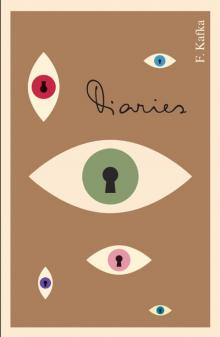 Diaries of Franz Kafka
Diaries of Franz Kafka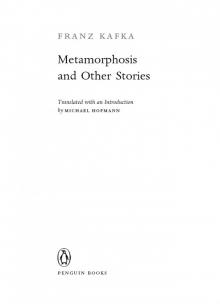 Metamorphosis and Other Stories
Metamorphosis and Other Stories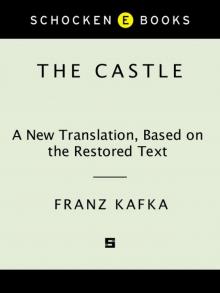 The Castle: A New Translation Based on the Restored Text
The Castle: A New Translation Based on the Restored Text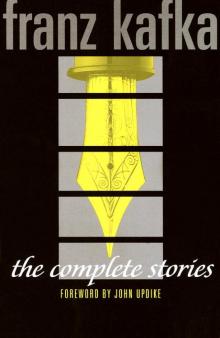 The Complete Stories
The Complete Stories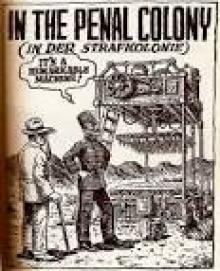 In the Penal Colony
In the Penal Colony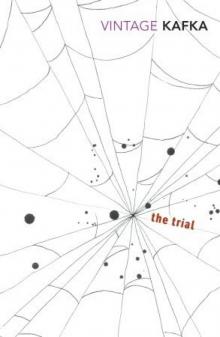 The Trial
The Trial Amerika
Amerika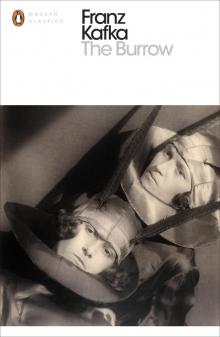 The Burrow: Posthumously Published Short Fiction
The Burrow: Posthumously Published Short Fiction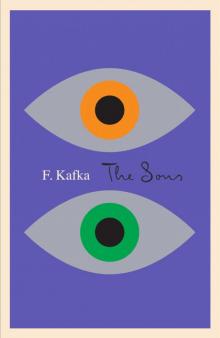 Sons
Sons Letters to Milena
Letters to Milena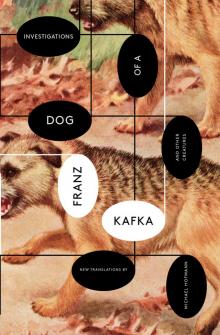 Investigations of a Dog: And Other Creatures
Investigations of a Dog: And Other Creatures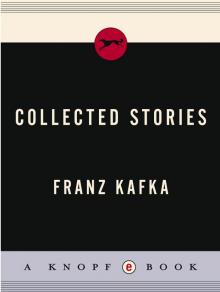 Collected Stories
Collected Stories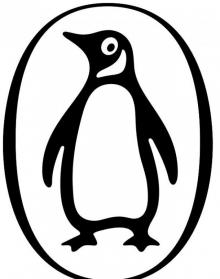 The Great Wall of China
The Great Wall of China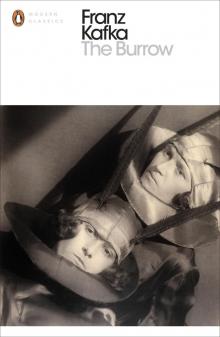 The Burrow
The Burrow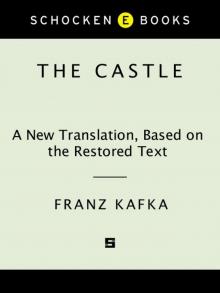 The Castle
The Castle The Meowmorphosis
The Meowmorphosis The Sons
The Sons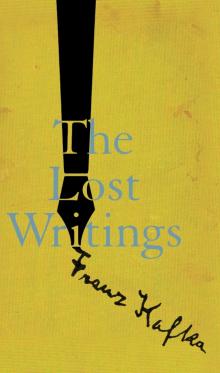 The Lost Writings
The Lost Writings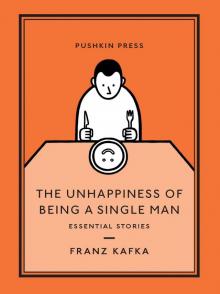 The Unhappiness of Being a Single Man
The Unhappiness of Being a Single Man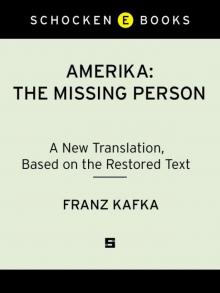 Amerika: The Missing Person: A New Translation, Based on the Restored Text
Amerika: The Missing Person: A New Translation, Based on the Restored Text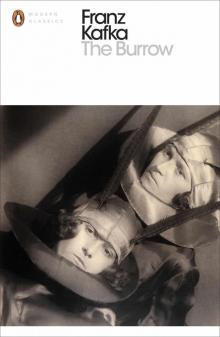 The Burrow: Posthumously Published Short Fiction (Penguin Modern Classics)
The Burrow: Posthumously Published Short Fiction (Penguin Modern Classics)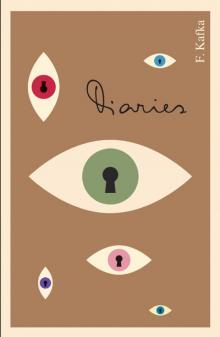 The Diaries of Franz Kafka
The Diaries of Franz Kafka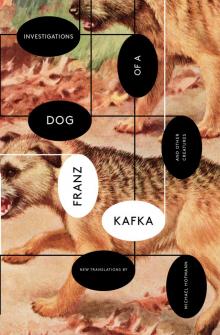 Investigations of a Dog
Investigations of a Dog The Metamorphosis and Other Stories
The Metamorphosis and Other Stories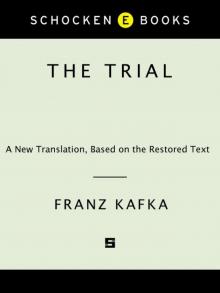 The Trial: A New Translation Based on the Restored Text
The Trial: A New Translation Based on the Restored Text